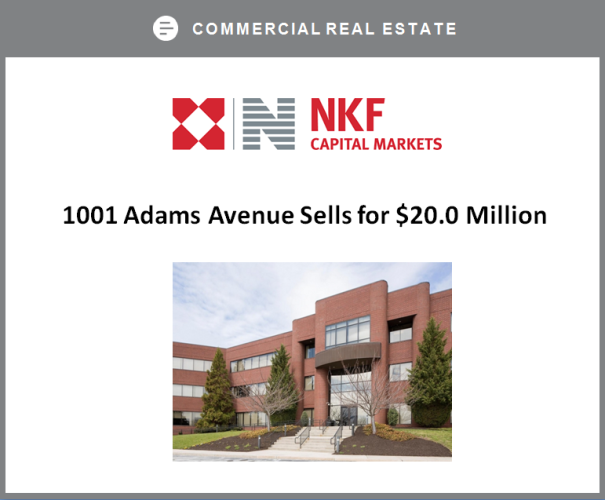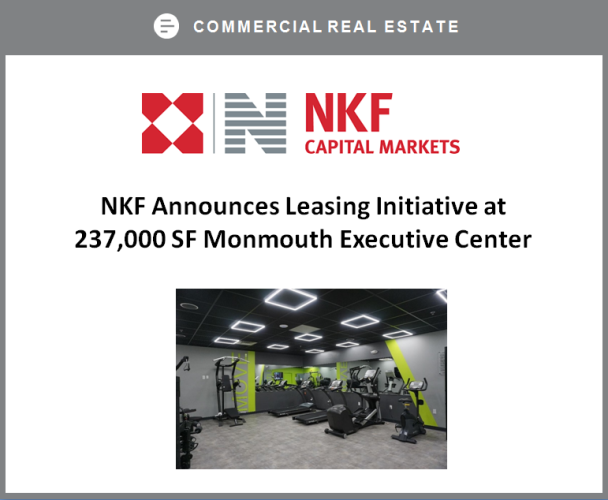Ten-X Research report indicates continued strong demand for apartments despite uptick in vacancies as homeownership figures hover near record lows
Ten-X, the nation’s leading online real estate marketplace, today released its latest U.S. Multifamily Market Outlook, including the top five ‘Buy’ and ‘Sell’ markets for multifamily real estate assets. The long-term forecast identifies Orlando, Phoenix, Atlanta, Fort Lauderdale, and Las Vegas as markets in which investors should consider buying multifamily assets. The research also indicates that New York City, Pittsburgh, San Francisco, Miami, and Nashville are markets in which investors might consider selling these properties.
Ten-X Research chooses top ‘Buy’ and ‘Sell’ markets based on several criteria, including projected NOI growth, vacancy improvement, rent growth, and valuations in the Ten-X Research Long Term Forecast.
Nationwide, Ten-X Research remains optimistic about the multifamily sector, as apartment demand continues its six-year surge. Although apartment vacancies have increased by 10 bps in each quarter since the first half of 2015, the report notes that the 4.5 percent national vacancy rate is still indicative of healthy demand. This rise in vacancy is reflective of the ongoing multifamily construction boom; it is estimated that 260,000 new units will come to market in 2016. This will slightly outpace the projected 192,000 units of absorption during the same time period, but Ten-X Research notes that supply and demand will likely remain relatively balanced over the next two years.
“Several factors are driving apartment demand, not the least of which are the fundamental demographic shifts driven by millennial renters,” said Ten-X Research Chief Economist Peter Muoio. “While homeownership increased slightly in the first quarter of 2016, trends suggest that more and more households will opt to rent, rather than own, in the nearterm. In general, young people, who witnessed the Great Recession firsthand, are more averse to purchasing homes, particularly as couples tend to marry and have children later in life.”
The Ten-X U.S. Multifamily Market Outlook showed that rental rates continue to increase, albeit at a slowing pace, with an uptick of 0.4 percent this quarter. The research projects that rents will grow at an average annual pace of 3.6 percent through 2018, before slowing to about 1.4 percent during the predicted 2019 cyclical downturn.
2016-2019 U.S. Multifamily Projections:
| 1Q 2016 – 2019 US MULTIFAMILY PROJECTIONS | ||||||
| Top 5 Buy Markets | 1Q 2016 Rents (per unit) | 2019 Rents (per unit) | Change in Rents (%) | 1Q 2016 Vacancies (%) | 2019 Vacancies (%) | Change in Vacancies (bps) |
| Orlando, FL | 988 | 1187 | 20.1% | 5.7 | 5.7 | 0 bps |
| Phoenix, AZ | 822 | 983 | 19.6% | 5 | 5.8 | 80 bps |
| Atlanta, GA | 921 | 1055 | 14.5% | 5.2 | 5.3 | 10 bps |
| Fort Lauderdale, FL | 1263 | 1460 | 15.6% | 4.2 | 6.6 | 140 bps |
| Las Vegas, NV | 890 | 1020 | 14.6% | 4.2 | 3.8 | -40 bps |
| Top 5 Sell Markets | 2015 Rents (per unit) | 2019 Rents (per unit) | Change in Rents (%) | 2015 Vacancies (%) | 2019 Vacancies (%) | Change in Vacancies (bps) |
| New York City, NY | 3430 | 3251 | -5.2% | 3.5 | 10 | 650 bps |
| Pittsburgh, PA | 918 | 989 | 7.7% | 4.5 | 6.5 | 240 bps |
| San Francisco, CA | 2501 | 2613 | 4.5% | 4.6 | 8.3 | 370 bps |
| Miami, FL | 1248 | 1350 | 8.2% | 5.1 | 7.8 | 270 bps |
| Nashville, TN | 881 | 966 | 9.6% | 5 | 9.1 | 410 bps |
| U.S. | 1190 | 1332 | 11.9% | 4.5 | 6 | 150 bps |
The MultifamilySector’s Top Five Buy Markets*:
Orlando, FL
Orlando’s economy is growing across the board, with year-over-year job growth exceeding 4 percent and unemployment shrinking to the mid-4 percent range, according to Ten-X Research.And, although completed multifamily construction reached 10-year highs the past two years, apartment demand has outpaced this new supply, as vacancies have fallen to 5.7 percent. As a result, Orlando rents have jumped a robust 6 percent from only one year ago.
Phoenix, AZ
Phoenix’s population is growing – it jumped nearly 2 percent in 2015 – and so is apartment demand. Rents are up 5.9 percent from one year prior, a trend that is likely to continue through 2018. The metro area’s development comes as its booming professional services and financial sectorsgrew 5.5 percent and 6.4 percent, respectively, while jobs are up over 3.5 percent year overyear. These favorable economic conditions are likely to translate to big NOI gains in the coming years: about 5.5 percent annually through 2018, according to Ten-X Research.
Atlanta, GA
Although Atlanta’s economy showed signs of cooling in early 2016, the metro area continues to demonstrate strong job growth and shrinking unemployment.Apartment vacancies shrunk to approximately 5 percent in 2015, as the area’s population grew 1.7 percent. Though new multifamily supply is on the way, Ten-X projects that investors will post NOI gains of about 4 percent each year through 2018, before decelerating in the projected 2019 cyclical slowdown.
Fort Lauderdale, FL
Fort Lauderdale’s economy has been hot in recent quarters, illustrated by the 4-percent annual job growthposted in early 2016. The professional services and financial sectors once again drove local commerce, growing by 6 percent and 4 percent year overyear, respectively. Meanwhile, Ten-X Research’s report finds that apartment vacancies are likely to fall all the way into the 3-percent range through 2018, as investors experience healthy rent growth and NOI gains.
Las Vegas, NV
Las Vegas employment reached an all-time peak in early 2016, driven in large part by massive growth – 8.4 percent – in the education/healthcare sector. Simultaneously, the metro area’s population shot up by 2.2 percent, more than double the national rate. This is good news for multifamily investors, as vacancies sit at 4.2 percent, and will continue to decline through 2018, according to Ten-X Research. Rent growth, which measured in the 3-percent range in the quarter, will also likely accelerate in the next two years.
The MultifamilySector’s Top Five Sell Markets*:
New York City
Several indicators point to the economic health of New York City, with unemployment in decline and the city’s population rising in 2015. Still, New York’s population growth lagged behind that of the US, and many of the city’s major business sectors are experiencing slowdowns, pointing to a slightly cooling market. With significant supply set to deliver in the next 18 months, vacancies – which are already on the rise – are projected to climb above 10 percent by 2017. Apartment rents have risen a strong 4.5 percent in the past year, but rising vacancies will make rent growth virtually non-existent by 2019, and market NOI is projected to decline annually over the next three years.
Pittsburgh
Since 2012, new supply has outpaced demand in Pittsburgh, driving apartment vacancies up by 150 bps to 4.5 percent. The next three years are projected to be much of the same, with a heavy supply of new apartments pushing vacancies above 6 percent. At the same time, Pittsburgh employment is growing sluggishly and is not likely to exceed 1-percent growth by 2019, while the metro’s population has declined for three consecutive years. Ten-X Research projects effective rent growth accelerating modestly from its current 2-percent rate in the next two years and an average NOI growth of just 1.7 percent in that timeframe.
San Francisco
San Francisco’s economy is booming, with employment up almost four percent in the past year. The city’s apartment rents have also seen phenomenal growth, with rents jumping by a cyclical high of 10.9 percent in 2015. However, with recent completions and a robust development pipeline, today’s 4.6-percent vacancy rate is projected to surpass 8 percent by 2019, while rent growth is expected to decelerate dramatically through 2018, followed by an anticipated 6-percent contraction the following year, according to the report. NOI growth is similarly expected to average three percent for the next two years before contracting by 7.4-percent in 2019.
Miami
Unemployment declined 80 bps in the last year, falling below six percent for the first time this cycle, and Miami jobs have risen to an all-time peak. Despite these positive signs, Ten-X Research’s report warns of a cooling economy, including the fourth straight year of slowing population growth. Apartment vacancies are up more than 100 bps to 5 percent and are projected to reach highs near eight percent by 2019 as a result of heavy permit issuing and a strong supply pipeline. While effective rents are at all-time highs, rising vacancies will lead to decelerating rent growth, and NOI growth is projected to average less than 2 percent per year through 2018.
Nashville
Nashville is currently strong in terms of economics and demographics, with a 3.3-percent year-over-year growth in employment extending the city’s all-time record for total employment, and the city’s population rising by two percent in 2015. The city’s unemployment is also in the mid-three-percent range, a figure well below the US average. But while the city’s rents have risen by 4.5 percent from a year ago, apartment vacancies have recently climbed by 80 bps, as an influx of completions have overtaken demand. With a great deal of permitting activity, supply is expected to increase, and Ten-X Research projects vacancies climbing past nine percent by 2019, which will impede rent growth and NOI over the next few years.
*Data source for Top Buy/Sell Markets: REIS, Ten-X Research forecasts.
About Ten-X
Ten-X is the nation’s leading online real estate transaction marketplace and the parent to Ten-X Homes, Ten-X Commercial and Auction.com. To date, the company has sold 200,000+ residential and commercial properties totaling more than $39 billion. Leveraging desktop and mobile technology, Ten-X allows people to safely and easily complete real estate transactions entirely online. Ten-X is headquartered in Irvine and Silicon Valley, Calif., and has offices in key markets nationwide. Investors in the company include Google Capital and Stone Point Capital. For more information, visit Ten-X.com.






